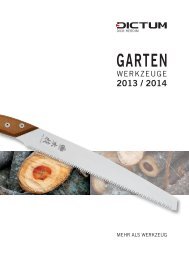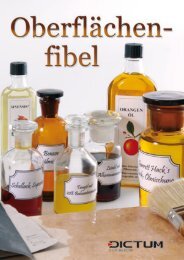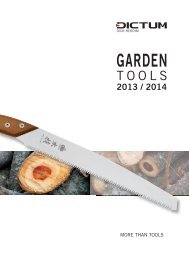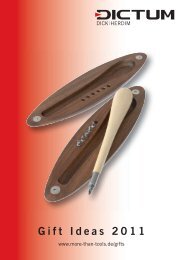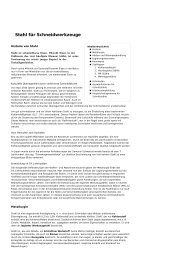Download the Natural Finishing Manual in PDF
Download the Natural Finishing Manual in PDF
Download the Natural Finishing Manual in PDF
You also want an ePaper? Increase the reach of your titles
YUMPU automatically turns print PDFs into web optimized ePapers that Google loves.
and aromatic enrichment th<strong>in</strong> and volatile oils like balsam<br />
oil of turpent<strong>in</strong>e or orange oil. Used only pure <strong>the</strong>y are not<br />
suitable for <strong>the</strong> f<strong>in</strong>ish of wood. Then <strong>the</strong>re are non-harden<strong>in</strong>g<br />
vegetable oils, like Camellia oil. They can be used as<br />
polish<strong>in</strong>g oil or antirust agents for metals, <strong>the</strong>y are not very<br />
suitable for long-last<strong>in</strong>g wood preservation. Vegetable oils<br />
can be mixed <strong>in</strong> order to achieve specific characteristics.<br />
Dry<strong>in</strong>g Accelerator<br />
Dry<strong>in</strong>g accelerators, also called siccatives, are added to<br />
most of <strong>the</strong> purchasable oil mixes <strong>in</strong> order to reduce <strong>the</strong><br />
dry<strong>in</strong>g time. The catalytic effect is created by metal jo<strong>in</strong>ts<br />
(cobalt, heavy metals oxides). This way <strong>the</strong> oil is no longer<br />
environmentally friendly. Besides <strong>the</strong> penetration is reduced<br />
by shorten<strong>in</strong>g <strong>the</strong> dry<strong>in</strong>g time and thus <strong>the</strong> long-last<strong>in</strong>g<br />
protection. Therefore we recommend to not add any<br />
siccatives.<br />
Surface<br />
You can oil all natural f<strong>in</strong>ished, gr<strong>in</strong>ded or polished and dry<br />
wooden surfaces. Best suitable with a grit of 180 – 220 and<br />
a wood moisture of less than 12°. Open-pored woods like<br />
rosewood and wenge should first be treated with gra<strong>in</strong> fillers.<br />
Layer composition<br />
It is vital to first apply <strong>the</strong> soft and <strong>the</strong>n <strong>the</strong> harder part,<br />
e.g. first shellak ground <strong>the</strong>n oil and f<strong>in</strong>ally wax. If it is<br />
necessary to apply several oil layers <strong>the</strong> first application<br />
should be reduced. The follow<strong>in</strong>g layers should only be<br />
applied once <strong>the</strong> previous one has tried and <strong>the</strong> f<strong>in</strong>ish has<br />
been done.<br />
M<strong>in</strong>eral and animal oils<br />
In addition to <strong>the</strong> vegetable oils m<strong>in</strong>eral oil derivates are<br />
also used as wood preservation, e.g. paraff<strong>in</strong> oil, which are<br />
usually <strong>the</strong> basis of many hard oils. Several culture groups<br />
traditionally used animal oils, like fish oil. These oils will not<br />
be considered <strong>in</strong> this brochure.<br />
Security advice<br />
All cur<strong>in</strong>g oils can heat up dur<strong>in</strong>g polymerisation. If <strong>the</strong><br />
cloth is still wet or oil-soaked a risk of spontaneous ignition<br />
is likely! Please store <strong>in</strong> closed conta<strong>in</strong>ers or under water.<br />
3




